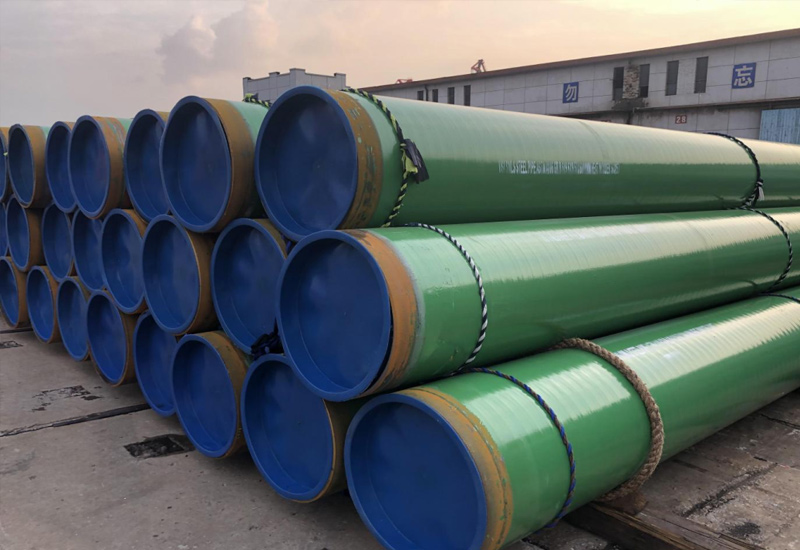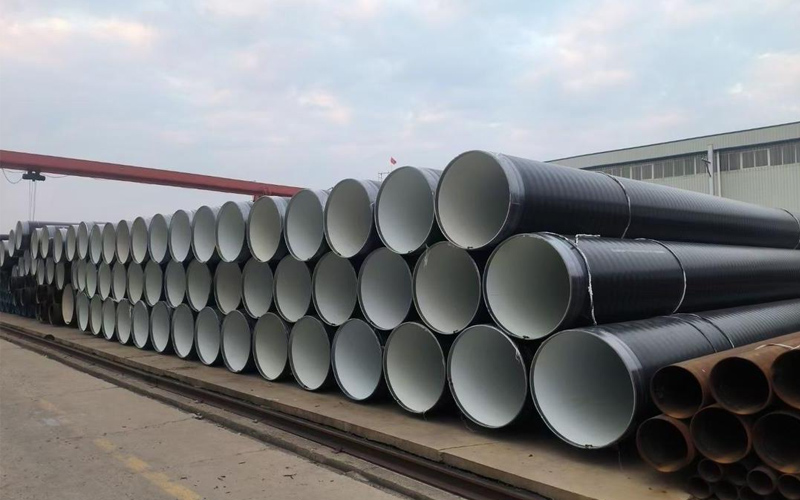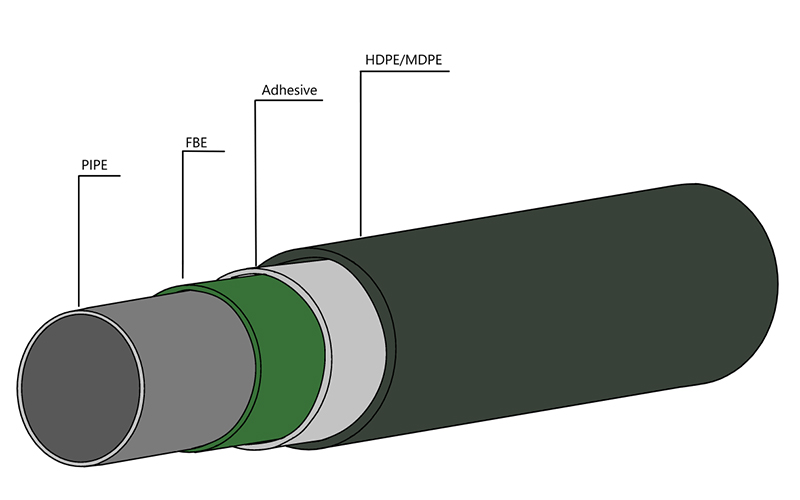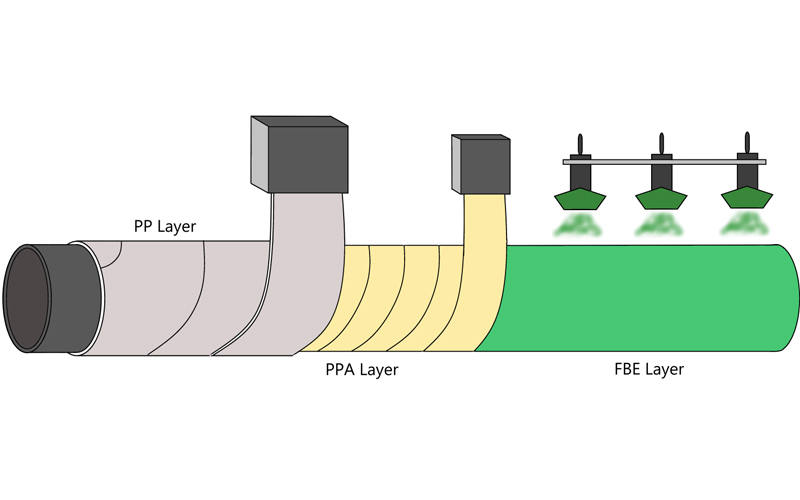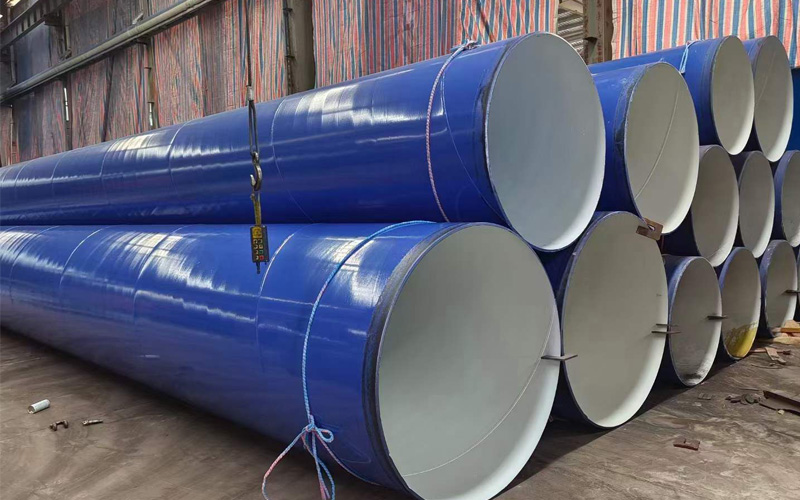Introduction:Technology differences determine success or failure, and selection needs to be “precise”
In oil and gas transmission, municipal infrastructure and other major projects, the reasonable choice of steel pipe welding process directly affects the project quality and construction costs. At present, LSAW and SSAW, as the two mainstream welding technologies, often confuse engineers and technicians in their selection due to significant differences in molding process, mechanical properties and application scenarios. Take the national key projects as an example: the West-East gas transmission project adopts LSAW steel pipe to ensure the safe transmission of high-pressure pipelines, while the coastal city drainage network uses spiral submerged arc welded steel pipe to realize the economic construction. For this technical selection problem, this paper will systematically analyze the technical characteristics of the two welding process differences, the establishment of technical selection matrix based on engineering needs, to provide a scientific decision-making basis for the project.
Technical principle comparison: LSAW vs SSAW
LSAW (straight seam submerged arc welding)
Forming process: the steel plate is rolled into tube billet along the length direction, and a single longitudinal straight seam welding is performed.

Welding direction: the weld seam is parallel to the axis of the steel pipe, the welding heat input is uniform, and the residual stress is low (DNV-OS-F101 standard requires the residual stress to be less than 15% of the yield strength)
SSAW (spiral submerged arc welding)

Forming process: the steel plate is continuously rolled in a spiral Angle (usually 20°-25°) to form a spiral weld.
Welding direction: the weld is distributed in a spiral, and the length of the weld is 30%-50% longer than LSAW, but there is a risk of geometric stress concentration.
Production process differences
| Parameter | LSAW steel pipe | SSAW steel pipe |
| Forming method | Single seam welding | Spiral continuous welding |
| Weld length (D=1m) | About 3.14m (single straight seam) | About 4.5m (when the helix Angle is 25°) |
| Applicable pipe diameter | 406-1422mm (API 5L standard) | 219-3048mm (high flexibility) |
| Thickness range | 6-40mm (can cover X80/X100 high strength steel) | 5-25mm (thin wall cost advantage is significant) |
| production rate | Slow (0.5-1.0m/min) | Fast (1.2-1.8m/min) |
| Raw material utilization | 85-90% (cut to size) | 95%-98% (continuous strip steel no waste) |
1. Production process decomposition
LSAW:
Steel plate pre-treatment → JCOE forming → pre-welding → internal/outside submerged arc welding → expansion → nondestructive testing → anti-corrosive treatment.
Key control point: the deviation of weld straightness is less than 0.2% (API 5L standard).
SSAW:
Strip steel unrolling → spiral forming → continuous welding → flying shear fixed length → weld grinding → hydrostatic test.
Core challenge: precision control of helix Angle (±0.5°).
Performance differences: strength, toughness, defect risk
1. Comparison of mechanical properties
Tensile strength:
The weld strength of LSAW can reach 98%-100% of the base material (API 5L requires more than 485MPa), while the strength of SSAW is about 90%-95% of the base material due to the stress component of the spiral weld.
Impact ductility:
In the low temperature environment of-20℃, the Charpy impact energy of LSAW weld is greater than or equal to 40J (GB/T 9711 Class B), and the impact energy of SSAW is usually less than or equal to 35J because of the wide heat-affected zone (HAZ).
2. Defect type and detection efficiency
LSAW:
The main defects are unheated or slag inclusion, which can be covered by ultrasonic testing (UT) with a detection rate of more than 99%. The phased array UT technology is used in the west-east gas transmission project to reduce the misjudgment rate of defects to less than 0.1%.
SSAW:
The spiral weld is prone to the “crescent bend” defect (caused by forming stress), so X-ray full circumference inspection (RT) should be used, but the detection speed is slow (only 60% of UT), and the sensitivity to crack defects is low.
3. Fatigue life data
According to DNV-RP-C203 standard cyclic load test:
The fatigue strength of LSAW steel pipe under 10^7 cycles is 220MPa.
Due to stress concentration, the fatigue strength of SSAW steel pipe drops to 180MPa.
Selection guide: Match technology by scenario
1. High pressure oil and gas transportation (pressure> 10MPa)
Forced selection of LSAW:
Taking the East-route natural gas pipeline between China and Russia as an example, the weld of X80 grade LSAW pipe (wall thickness 21.4mm) operates under the pressure of 12MPa, and the qualified rate of nondestructive testing of the weld is 99.98%.
2. Urban water supply and drainage/Low pressure gas (pressure less than 4MPa)
Recommend SSAW:
A drainage project in a southeast Asian city uses SSAW pipe (diameter 2600mm) to achieve large diameter and low cost through spiral forming. The total cost of the project is 28% lower than that of LSAW scheme.
3. Marine engineering (high corrosion, dynamic loads)
Only LSAW is compliant:
DNV-OS-F101 clearly stipulates that the submarine pipeline must be welded with straight seam pipe. The LSAW pipeline in the North Sea oil field of Norway has been in service for 20 years in seawater containing Cl⁻ 50000ppm, and the wall thickness loss is only 0.3mm.
4. Mine slurry transport (high wear scenarios)
Hybrid approach:
Using SSAW pipe as the main line (low cost) and replacing the key elbow section with LSAW pipe (high wear resistance), the comprehensive cost is reduced by 15%.
Industry frontier trend: the integration of intelligence, green and new materials
Intelligent welding upgrade
LSAW:
The laser vision tracking system is introduced to compensate the plate forming error in real time, and the accuracy of weld seam straightness control is improved to ±0.1mm (Optimization of High-strength Steel Arc Welding Process 2022).
SSAW:
The AI-based weld quality prediction model can identify potential defects in advance through thermal imaging data, reducing the scrap rate from 2% to 0.5%.
Green manufacturing technology
LSAW:
The energy consumption is reduced by 40% and CO₂ emissions are reduced by 35% by replacing gas preheating with electromagnetic induction heating.
SSAW:
Thin-walled high-strength steel (such as X70, wall thickness 8mm) is developed to reduce the material consumption by 20% while meeting the strength requirements.
New material breakthrough
X120 ultra-high strength steel:
The LSAW process has achieved X120 steel grade (yield strength greater than or equal to 120ksi) welding, with a wall thickness of 18% less than X80, suitable for ultra-high pressure hydrogen pipelines.
Conclusion: There is no absolute advantage or disadvantage of technology, scene adaptation is the core
The competitive nature of LSAW and SSAW is the balance of the “performance-cost-efficiency” triangle. Engineers need to go beyond the surface comparison of technical parameters and analyze the project scenario in depth:

High pressure, low temperature, corrosive environment: LSAW reliability is irreplaceable;
Low and medium pressure, large diameter, cost sensitive scenarios: SSAW has a better overall cost performance.
As the International Pipe Association (IPA) report states: “Smart and green will reshape the welding technology landscape over the next decade, but the principle of ‘suitability first’ will never go out of fashion.”
Get Your Custom Steel Pipe Quote Today!
Provide us with your project details (like application, specifications, quantity). Our experienced team will respond with a tailored solution and competitive quote within 24 business hours.
Related Articles
ASTM A53 vs. API 5L: A Guide to Selection and Application
Steel Density Analysis: Core Differences between Mild and Medium Carbon Steels and Industrial Applications
3LPE coated steel pipe: a solid barrier in the field of industrial corrosion protection
3LPP coated pipe: anti-corrosion guard in high temperature and high pressure environment
FBE steel pipe: the technological armor of the steel defense line
How LSAW/SSAW Steel Pipes Ensure Safe & Durable Drinking Water Pipelines
HOT TAGS
latest posts
- ASTM A53 vs. API 5L: A Guide to Selection and Application
- Cracking the Code: What Makes SSAW Spiral Steel Pipes the Engineer’s Top Pick Worldwide
- What is ASTM A252 pipe? Engineering basic solution.
- A Concise Guide to EN 10217: European Standard for Pressure Welded Tubes
- The Hydrostatic Test: Why It’s the Final Defense for API 5L Pipe Integrity




